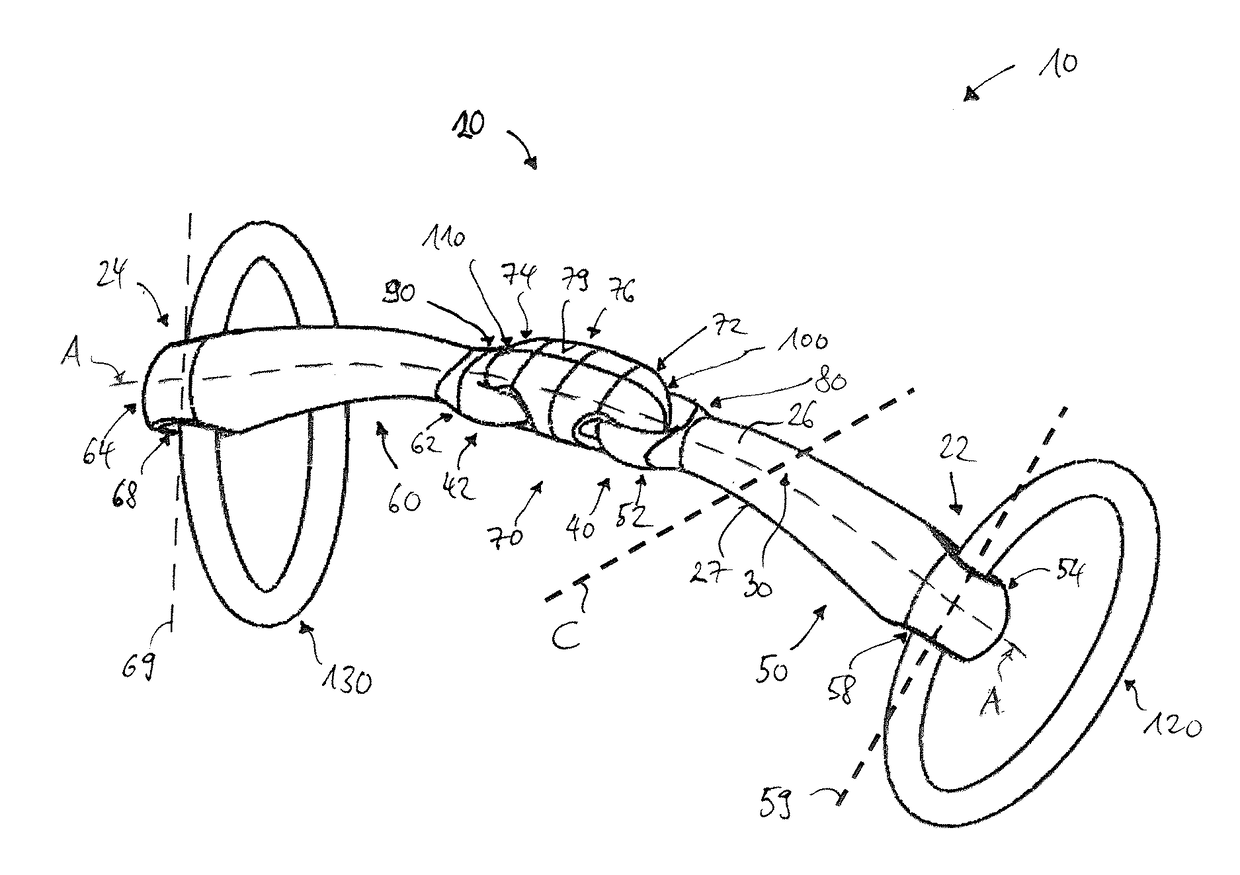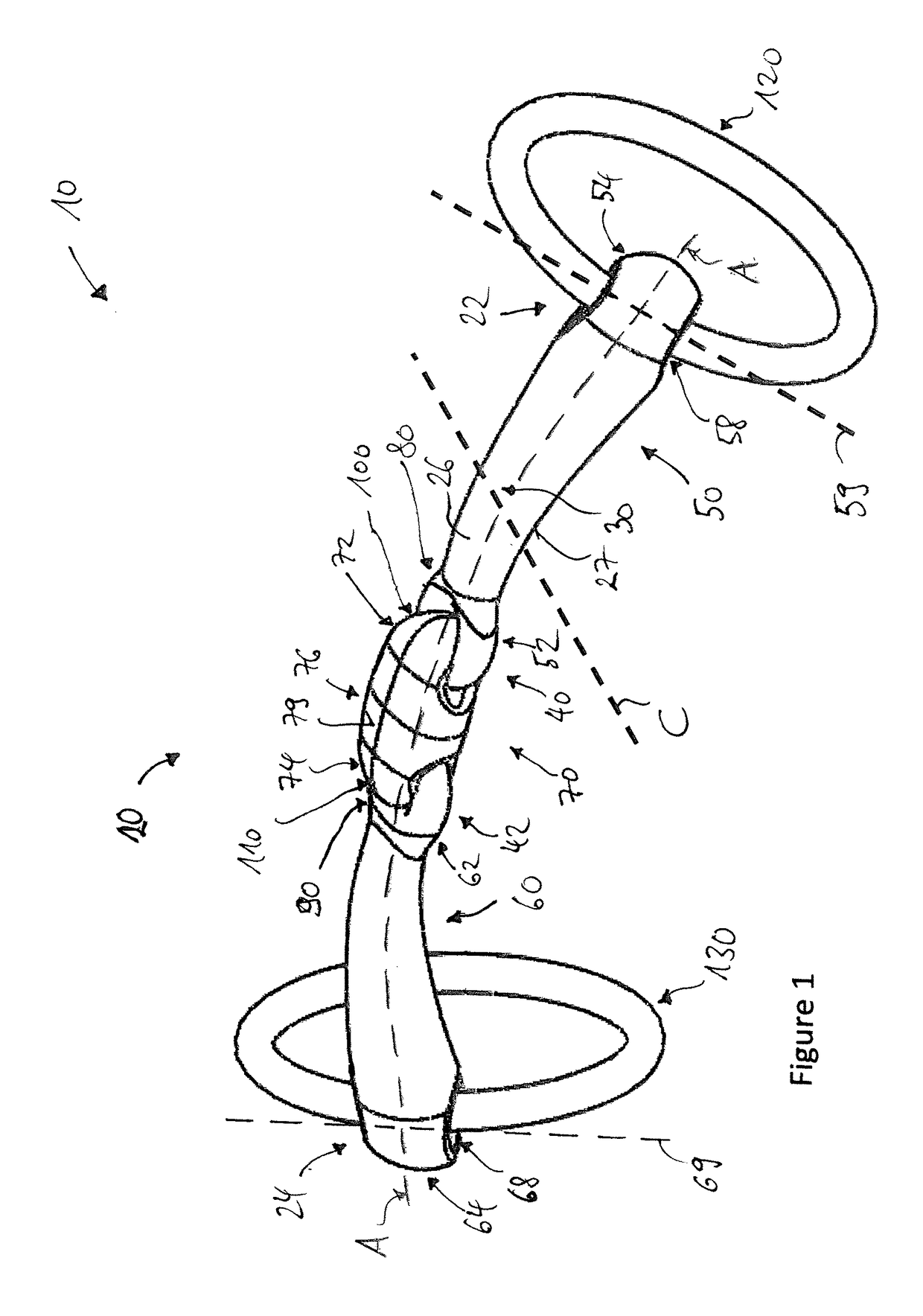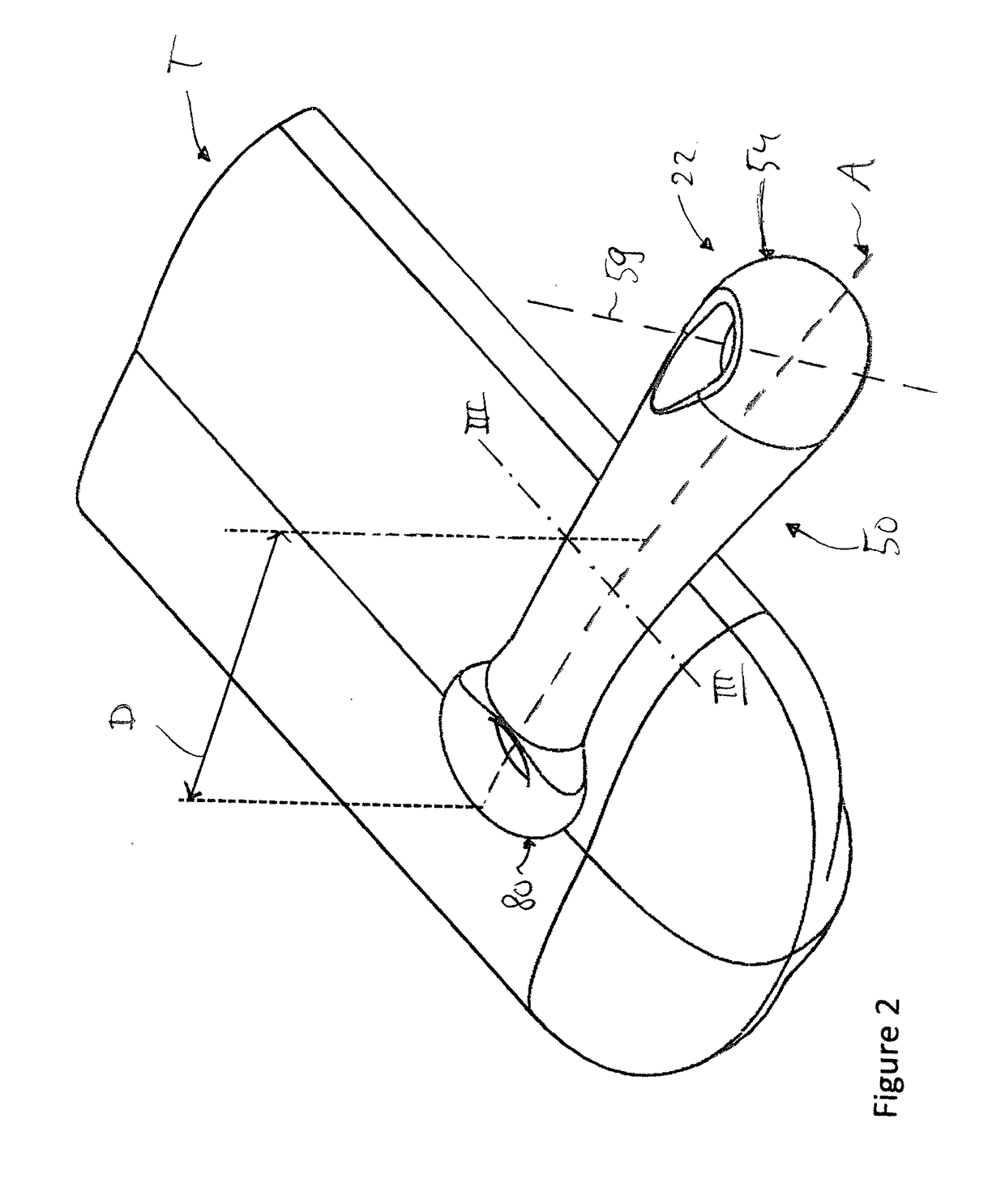Horse Bit
a bit and horse technology, applied in the field of horses' teeth, can solve the problems of high contact pressure on the inner surface of the mouth, and achieve the effects of reducing the pressure on the tongue, increasing the stability of the bit in the mouth of the horse, and increasing the comfort of the horse's action
- Summary
- Abstract
- Description
- Claims
- Application Information
AI Technical Summary
Benefits of technology
Problems solved by technology
Method used
Image
Examples
Embodiment Construction
[0050]FIGS. 1 to 5 and 7 to 12 show a first embodiment of a horse bit 10 according to the present invention. In FIGS. 10 and 11 the first embodiment is shown with alternative cheeks. FIG. 6 shows a second embodiment of a horse bit 10 according to the present invention.
[0051]The horse bit 10 according to the first embodiment comprises a shackle 20 configured to be inserted into a horse's mouth such that the shackle 20 extends over the horse's tongue and lies between the horse's tongue and the horse's palatine (as indicated in FIGS. 2 and 12). The shackle 20 extends along a longitudinal path A. Preferably, the longitudinal path A is at least slightly curved and / or extends along the centre line of the shackle 20 (or its parts). An upper surface side 26 of the shackle 20 faces to the horse's palatine and a lower surface side 27 of the shackle 20 faces to the horse's lower jaw. Further, the shackle surface includes two lateral surface sides 28. Before defining the shackle surface and its...
PUM
 Login to View More
Login to View More Abstract
Description
Claims
Application Information
 Login to View More
Login to View More - R&D
- Intellectual Property
- Life Sciences
- Materials
- Tech Scout
- Unparalleled Data Quality
- Higher Quality Content
- 60% Fewer Hallucinations
Browse by: Latest US Patents, China's latest patents, Technical Efficacy Thesaurus, Application Domain, Technology Topic, Popular Technical Reports.
© 2025 PatSnap. All rights reserved.Legal|Privacy policy|Modern Slavery Act Transparency Statement|Sitemap|About US| Contact US: help@patsnap.com



